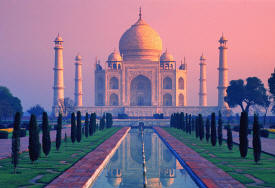India, Japan move to end deadlock on N-deal
Indrani Bagchi
TNN
Dec 29, 2011
NEW DELHI: India and Japan have moved to break the deadlock in negotiations for a civil nuclear agreement. In November, New Delhi made a set of proposals to accommodate Japan's concerns on an agreement that is seen as being crucial for the development of India's civilian nuclear sector.
On Wednesday, Japanese PM Yoshihiko Noda, on his maiden visit to India, put a positive spin on the N-deal. Welcoming the progress in an address in the Indian Council for World Affairs, he said, "At the working level, discussions on the civil nuclear deal have proceeded in right direction. I welcome this progress."
Indian negotiators have proposed what is euphemistically called "creative language" to address Japan's core concern - of New Delhi committing itself to no further nuclear tests. India has offered a statement, which was made by former foreign minister Pranab Mukherjee to the Nuclear Suppliers Group when they voted for its waiver in 2008.
That has been the clearest enunciation of India's commitment to continue with its moratorium on nuclear testing. Japan had asked for this commitment to be "strengthened" in the agreement, which has been difficult for India. With the new proposals, however, sources said, it may be possible to overcome Japan's concerns. Noda on Wednesday praised India's moratorium on tests, and hoped it would continue. It was seen as a positive signal.
Noda stressed on Japan's unique N-history. "Japan is the only country attacked by a nuclear weapon," he reminded the gathering.
Nguồn: The Times of India, http://timesofindia.indiatimes.com/india/India-Japan-move-to-end-deadlock-on-N-deal/articleshow/11285800.cms
Dec 29, 2011
NEW DELHI: India and Japan have moved to break the deadlock in negotiations for a civil nuclear agreement. In November, New Delhi made a set of proposals to accommodate Japan's concerns on an agreement that is seen as being crucial for the development of India's civilian nuclear sector.
On Wednesday, Japanese PM Yoshihiko Noda, on his maiden visit to India, put a positive spin on the N-deal. Welcoming the progress in an address in the Indian Council for World Affairs, he said, "At the working level, discussions on the civil nuclear deal have proceeded in right direction. I welcome this progress."
Indian negotiators have proposed what is euphemistically called "creative language" to address Japan's core concern - of New Delhi committing itself to no further nuclear tests. India has offered a statement, which was made by former foreign minister Pranab Mukherjee to the Nuclear Suppliers Group when they voted for its waiver in 2008.
That has been the clearest enunciation of India's commitment to continue with its moratorium on nuclear testing. Japan had asked for this commitment to be "strengthened" in the agreement, which has been difficult for India. With the new proposals, however, sources said, it may be possible to overcome Japan's concerns. Noda on Wednesday praised India's moratorium on tests, and hoped it would continue. It was seen as a positive signal.
Noda stressed on Japan's unique N-history. "Japan is the only country attacked by a nuclear weapon," he reminded the gathering.
Nguồn: The Times of India, http://timesofindia.indiatimes.com/india/India-Japan-move-to-end-deadlock-on-N-deal/articleshow/11285800.cms


